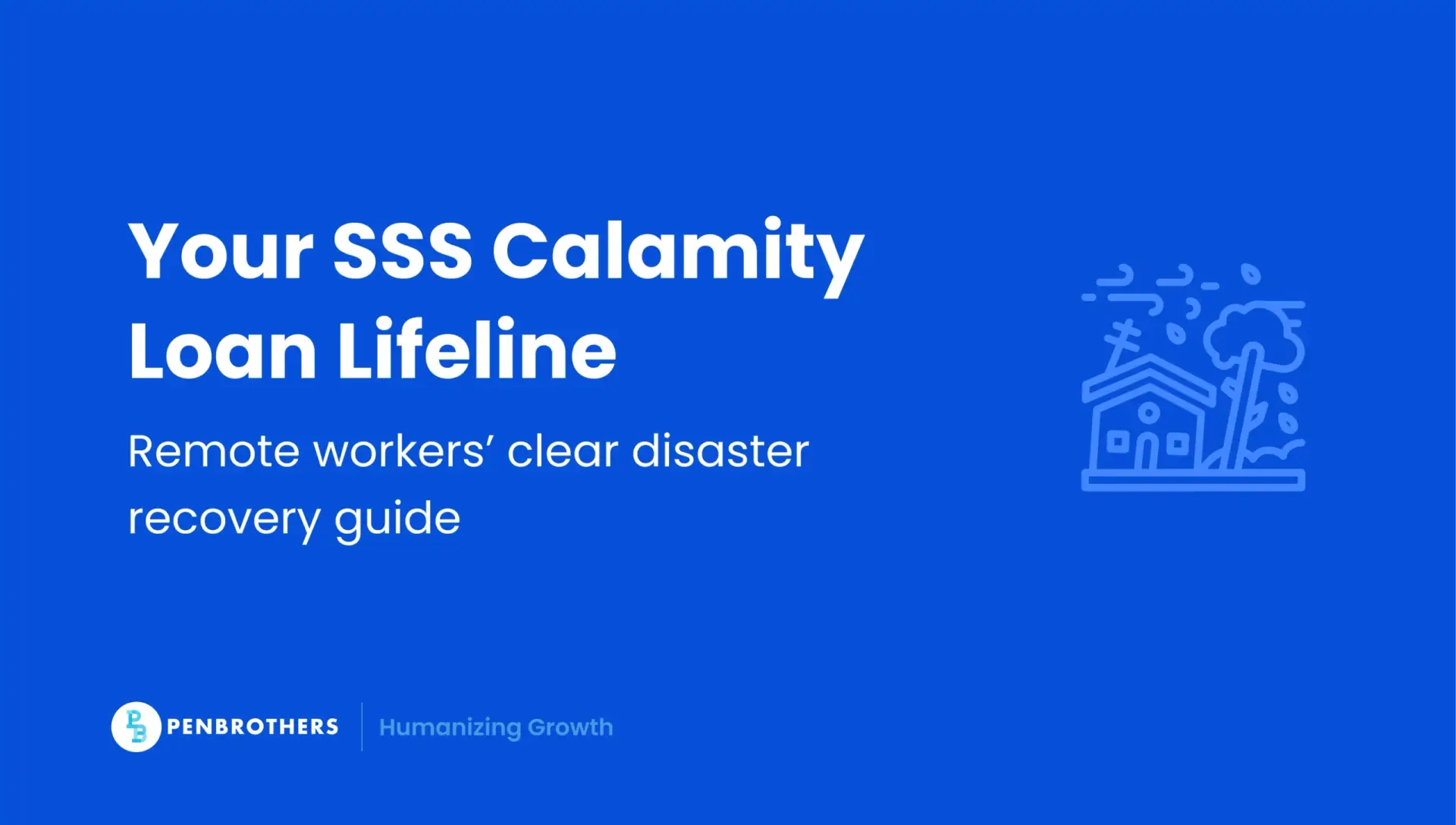What's Inside?
SSS Calamity Loan 2025: What Remote Workers Must Know

Key Takeaways
- Even a single missed contribution can block your loan. Don’t wait for disaster to find out.
- Remote workers with incomplete documentation risk delays, even if they meet all official criteria.
- Not planning repayment around irregular income could leave you financially exposed when calamity strikes.
- Applying late or after the employer delays can cost you critical weeks of financial relief.
- Your eligibility isn’t just about contributions. It’s about verified, up-to-date records in SSS systems.
Natural disasters in the Philippines don’t just damage property. They disrupt income, especially for remote professionals relying on a stable cash flow. The SSS Calamity Loan is designed to provide quick financial assistance to members affected by calamities.
However, remote workers face unique challenges that aren’t widely discussed: lapses in employer contributions, misclassified employment, and complications in repayment planning. This guide covers these hidden angles, practical scenarios, and tips to ensure your loan is approved and manageable.
Who is Eligible to Get the Calamity Loan under SSS?
Officially, you must:
- Be an SSS member with at least 36 months of contributions, including 6 months in the last 12 months.
- Reside or work in a state of calamity-declared area.
- Have no outstanding SSS calamity loan or other blocked obligations.
Scenario: Imagine Ana, a remote worker based in Cebu, who contributes regularly but recently switched employers. A storm hits her city, and she tries to apply for the loan. Her application is delayed because her new employer has not yet submitted the latest remittances. Without proper contribution records, eligibility is not recognized.
Key Insight: Eligibility isn’t just about the number of months contributed. It depends on verified, up-to-date contributions. Remote employees must ensure employer compliance, especially if working for companies registered abroad.
Related articles:
- Pag-IBIG Calamity Loan: Complete Guide for Remote Workers
- Is the Philippines Safe for Business? Complete Safety and Risk Analysis Guide
2. Application Process for Remote Professionals
Most guides focus on in-person applications, but remote workers need streamlined approaches.
Step-by-step remote-friendly approach:
- Confirm calamity declaration via official government channels.
- Prepare all required documents:
- Barangay certification confirming the disaster impact.
- Valid government ID.
- Bank account for loan disbursement.
- Employer certification verifying contribution records.
- Barangay certification confirming the disaster impact.
- Apply online through the SSS Virtual Service portal.
- Track your application and follow up if contributions are pending.
Timely verification of contributions and accurate documentation can dramatically reduce delays for remote workers.
Loan Terms and Repayment Scenarios
Many remote workers underestimate the impact of deductions on their take-home pay, especially those paid in foreign currencies or via multiple accounts. Planning ahead is essential to prevent financial strain.
- Loanable amount: Up to ₱20,000
- Repayment period: 24 months, with 1% service fee
- Interest rate: 7% per annum for members with good credit
Scenario: Carla, a remote graphic designer, borrows ₱15,000 after a typhoon. Her monthly deduction is ₱670. By mapping this against her monthly income in Philippine pesos (even if paid in USD), she ensures her cash flow isn’t disrupted while still meeting living expenses.
Common Pitfalls Often Ignored
- Contribution gaps: Even one missing employer remittance can block loan approval.
- Misclassified employment: Independent contractors or foreign-hired employees may appear ineligible.
- Late application: Waiting too long after the calamity declaration can delay assistance.
- Repayment misalignment: Monthly deduction schedules may conflict with irregular remote income cycles.
Scenario: Jordan, a remote consultant, lives in a declared calamity zone. His company delayed submitting contributions due to cross-border payroll complications. Though eligible, his loan release was postponed, forcing him to rely on personal savings.
Key Insight: Remote workers must proactively confirm that employer contributions are posted and understand how repayment aligns with their cash flow.
Practical Tips for Remote Workers
- Verify contributions regularly: Don’t wait until a calamity occurs.
- Keep employer certifications on file: This reduces delays during applications.
- Plan repayment in advance: Consider your income cycles and budget for monthly deductions.
- Apply early: Submit applications as soon as the calamity is declared.
- Monitor official updates: Interest rates, service fees, and processing timelines can change annually.
Scenario: Liza, working remotely in Bohol, maintains a personal record of all SSS contributions and employer certifications. When her city was struck by a typhoon, she submitted her application the day after the calamity was declared, ensuring quick loan approval and timely financial relief.
Conclusion
For remote professionals, the SSS Calamity Loan can be a lifeline, but only if you understand the hidden requirements and nuances. Contribution verification, timely applications, and repayment planning are critical.
By planning ahead and knowing the specific challenges faced by remote workers, you can maximize your chances of approval, ensure your financial stability, and avoid the stress of delays during a crisis.
*This article was crafted with the support of AI technology, refined by a human editor and verified by a human subject matter expert.





